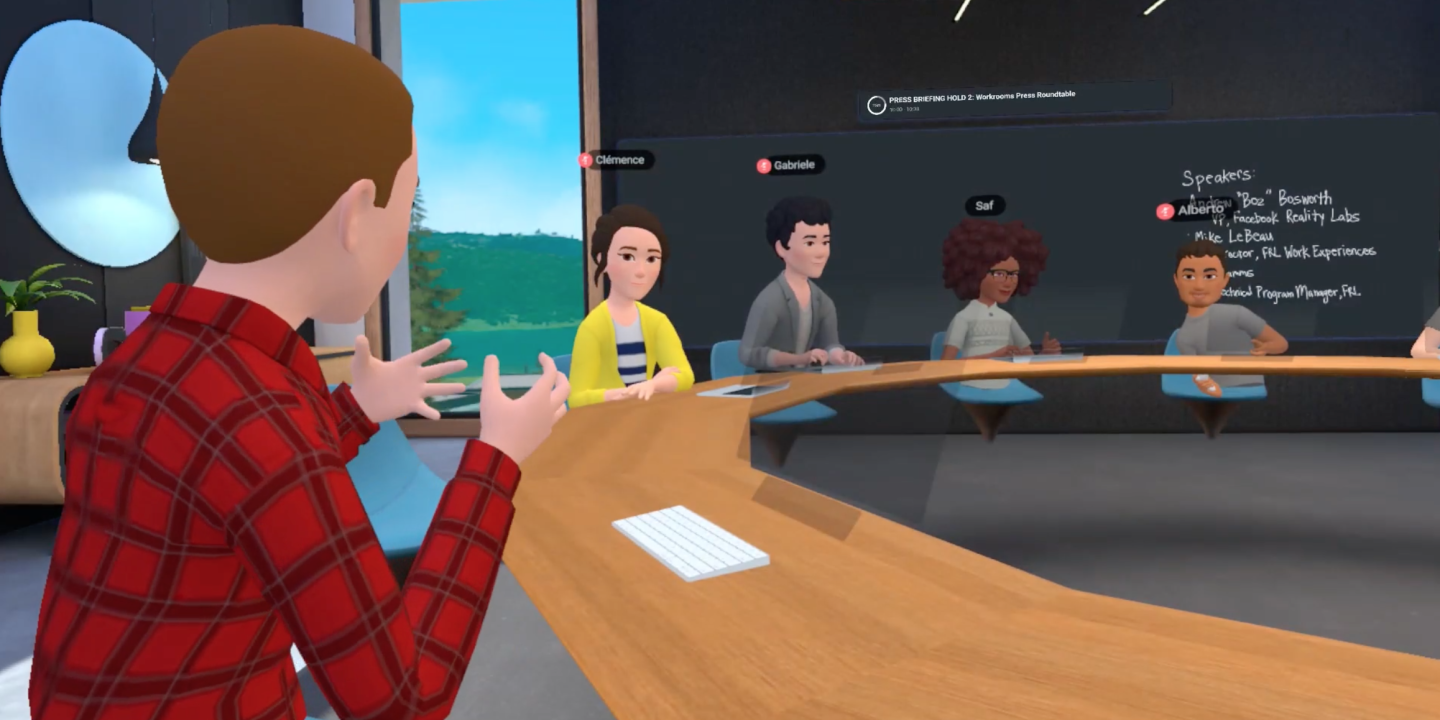
Surrounded by the gray of towers and parking lots, Jack, an anonymous office executive, dreams of large, bright windows overlooking a green landscape. Instead of 3 square meters Allotted to him in his strict open space, he imagines a large room in which he can accommodate his entire team, without having to push each other or dump the files around.
Launched in beta in August 2021 by Facebook, Horizon Workrooms wants to make Jack’s dream a virtual reality. A pillar of the American company’s metaverse, this app represents a non-physical workspace, where employees move in the form of small avatars. Using a virtual reality headset and joystick, they can write on the board, chat with colleagues… all from the comfort of home, installed in their living room.
Interconnected virtual spaces will be the way to break the isolation of the remote worker and to make more tangible, so to speak, his belonging to teamwork. As this app approaches the video game, Mark Zuckerberg dreams of competing with the heavyweights in video conferencing. Returning to the front of the stage with the explosion of remote work, the use of virtual reality at work isn’t new. IBM has spent millions of dollars on Second Life since the early 2000s, organizing gigantic meetings on the popular platform.
In 2020, Taiwanese smartphone manufacturer HTC made a milestone by launching the first version of Vive Sync, a platform that allows meetings with avatars in a virtual reality environment. The COVID-19 pandemic has opened new horizons for these applications. In April 2020, nearly 6,600 avatars wandered the pixelated aisles of the first edition of the French trade fair Laval Virtual, unsurprisingly dedicated to virtual and augmented reality.
Appearance of the avatar
Stealink, Teamflow, MeetinVR … Today, solutions that provide businesses with virtual offices have multiplied. Video conference experts feel the wind is spinning. Bill Gates, founder of the computer giant Microsoft, said it himself: “In two or three years, I expect most virtual meetings to move from photo-camera grids to 2D grids (…) to the metaverse”, In a note posted in December 2021 on his blog.
During 2022, Microsoft should deploy its “creative conferencing” solution, called Mesh for Teams, where employees will have the ability to appear as an avatar in Teams or in a virtual meeting space. For its part, Cisco, the leading American company in the field of Internet communication networks, announced in October 2021 that it will soon be possible to organize meetings on its WebEx tool in the form of a hologram.
You have 20.06% of this article left to read. The following is for subscribers only.

“Certified gamer. Problem solver. Internet enthusiast. Twitter scholar. Infuriatingly humble alcohol geek. Tv guru.”





